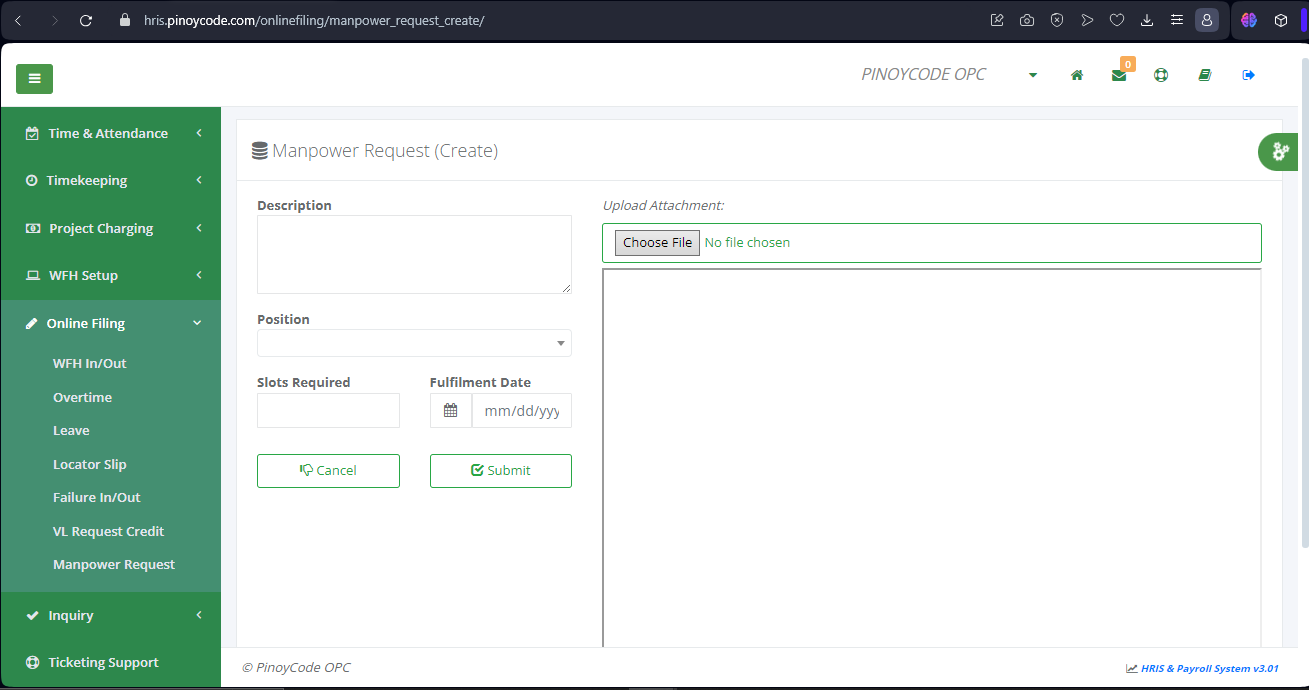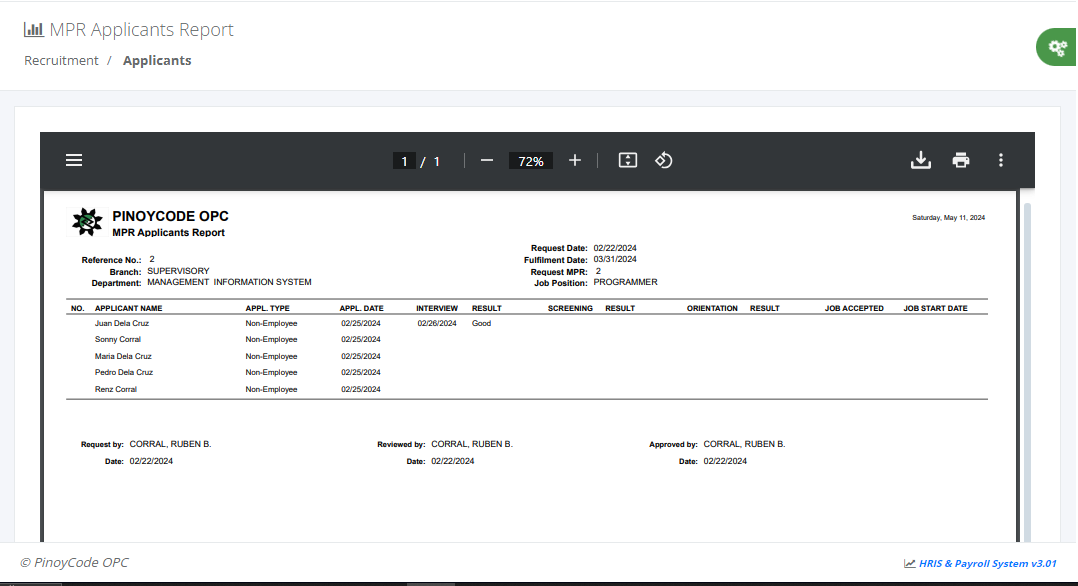Employee Recruitment
Employee recruitment is the process of identifying, attracting, and hiring qualified candidates to fill open positions within an organization. It involves various steps such as creating job descriptions, posting job ads, screening resumes, conducting interviews, and making job offers. Effective recruitment is essential for building a talented and diverse workforce that can contribute to the success of the organization. By implementing a strategic recruitment process, companies can attract top talent, reduce turnover, and ultimately drive business growth.
The recruitment process typically involves the following steps:
- Identify the need for a new employee: This could be due to growth, turnover, or a need for new skills in the organization.
- Develop a job description: This outlines the responsibilities, qualifications, and expectations for the role.
- Advertise the job: This can be done through job boards, social media, company website, or recruitment agencies.
- Screen applications: Review resumes and cover letters to identify potential candidates who meet the job requirements.
- Conduct interviews: This may include phone screenings, video interviews, and in-person interviews to assess the candidate's skills, experience, and fit with the organization.
- Check references: Contact previous employers or colleagues to verify the candidate's qualifications and performance.
- Make a job offer: Once a suitable candidate is identified, extend a formal offer of employment.
- Onboard the new employee: Provide orientation, training, and support to help the new employee transition into their role.
- Evaluate the recruitment process: Assess the effectiveness of the recruitment process to identify areas for improvement in future hiring efforts.

Approved manpower request is automatically queued in the job opening.
Recruitment Entry Form
- Applicants
The applicants for the job position were diverse in their backgrounds and experiences. Some had years of experience in the industry, while others were fresh graduates looking to start their careers. Each applicant brought their unique skills and qualifications to the table, making the selection process a challenging one for the hiring team. Despite the differences in their backgrounds, all the applicants shared a common goal of wanting to contribute their talents to the company and make a positive impact in their roles. It was clear that the decision would not be an easy one, as each applicant had something valuable to offer.
- Interview
During the employee interview, the candidates were asked a series of questions to assess their qualifications, skills, and fit for the job position. The interviewers delved into the candidates' work experience, education, and relevant accomplishments to determine their suitability for the role. Each candidate was given the opportunity to showcase their strengths and explain how they could contribute to the company's success.
The interview process also included questions about the candidates' problem-solving abilities, communication skills, and ability to work in a team. The interviewers wanted to get a sense of each candidate's personality and how they would fit into the company culture. Overall, the employee interview was a chance for the candidates to demonstrate their potential and convince the interviewers that they were the best fit for the job.
- Screening
During the employee screening process, the candidates' backgrounds were thoroughly reviewed to ensure they met the company's requirements and standards. This included conducting background checks, verifying employment history, and checking references provided by the candidates. The screening process also involved assessing the candidates' qualifications, skills, and experience to determine if they were a good fit for the job position.
In addition to the background checks and verification processes, the candidates may have been required to undergo drug testing, skills assessments, or other types of evaluations to further assess their suitability for the role. The employee screening process was designed to ensure that the company hired candidates who were not only qualified for the job but also aligned with the company's values and culture.
- Orientation
During the employee orientation, new hires were introduced to the company's mission, values, and culture. They were given an overview of the company's history, goals, and organizational structure. The orientation also included an introduction to key policies and procedures, as well as information on benefits, payroll, and other important aspects of the job.
New employees were introduced to their team members and provided with an overview of their roles and responsibilities. They were given a tour of the office or facility and shown where they could find resources and support. The orientation also included training on company systems, tools, and technologies to help new hires get up to speed quickly.
- Job Offer
In the employee job offer, the selected candidate was formally extended an offer to join the company in the specified job position. The offer letter outlined the terms and conditions of employment, including the start date, salary, benefits, and any other relevant details. It also included information on the company's expectations for the role and the candidate's responsibilities.
The offer letter expressed the company's excitement to have the candidate join the team and highlighted the value they would bring to the organization. It provided a clear and detailed overview of the compensation package, including any bonuses, incentives, or other perks that were included.

ULTRA LOTTO 6/58
- Draw Date: 09/16/2025
- Result: 34-24-32-01-27-03
- Price: Php 49,500,000.00
- Winner: 0
GRAND LOTTO 6/55
- Draw Date: 09/17/2025
- Result: 41-44-40-09-26-49
- Price: Php 161,835,217.60
- Winner: 0
SUPER LOTTO 6/49
- Draw Date: 09/16/2025
- Result: 34-37-41-48-46-33
- Price: Php 40,458,594.00
- Winner: 0
MEGA LOTTO 6/45
- Draw Date: 09/17/2025
- Result: 17-09-06-38-16-36
- Price: Php 31,742,677.40
- Winner: 0
LOTTO 6/42
- Draw Date: 09/16/2025
- Result: 20-18-06-42-10-21
- Price: Php 12,348,288.80
- Winner: 0
6 Digit
- Draw Date: 09/16/2025
- Result: 1-3-4-7-3-7
- Price: Php 1,510,611.60
- Winner: 0
4 Digit
- Draw Date: 09/17/2025
- Result: 9-7-3-8
- Price: Php 10,000.00
- Winner: n/a
SWERTRES RESULTS
- Draw Date: 09/17/2025
- 2PM: 8-0-9
- 5PM: 6-4-5
- 9PM: 3-1-0
EZ2 RESULTS
- Draw Date: 09/17/2025
- 2PM: 15-26
- 5PM: 25-02
- 9PM: 01-02